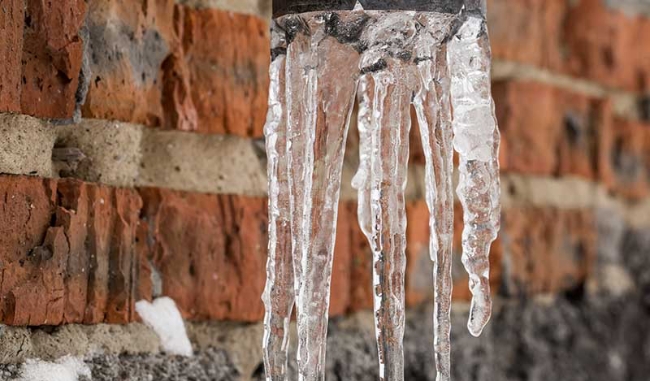Essential Tips to Protect Against Frozen Pipes in Winter
Essential Tips to Protect Against Frozen Pipes in Winter
Blog Article
Listed here underneath you can discover some great insights regarding Preventing and dealing with frozen pipes.

Winter can ruin your plumbing, specifically by freezing pipes. Right here's exactly how to stop it from happening and what to do if it does.
Intro
As temperatures decrease, the risk of icy pipes boosts, possibly resulting in expensive fixings and water damage. Comprehending exactly how to avoid frozen pipes is important for property owners in cold climates.
Recognizing Icy Pipes
What creates pipelines to freeze?
Pipes ice up when subjected to temperatures listed below 32 ° F (0 ° C) for prolonged durations. As water inside the pipelines ices up, it expands, taxing the pipe wall surfaces and potentially creating them to rupture.
Threats and damages
Icy pipelines can cause supply of water disturbances, building damage, and costly repairs. Burst pipes can flood homes and cause extensive structural damage.
Indications of Frozen Pipeline
Determining icy pipelines early can stop them from rupturing.
How to recognize frozen pipelines
Search for reduced water circulation from taps, uncommon smells or noises from pipes, and visible frost on exposed pipes.
Prevention Tips
Protecting at risk pipelines
Wrap pipes in insulation sleeves or make use of warmth tape to secure them from freezing temperature levels. Focus on pipes in unheated or exterior areas of the home.
Home heating techniques
Maintain indoor spaces sufficiently heated, specifically locations with plumbing. Open cabinet doors to enable warm air to distribute around pipes under sinks.
Safeguarding Outdoor Plumbing
Yard hoses and outside taps
Detach and drain pipes garden hoses prior to wintertime. Set up frost-proof spigots or cover outside taps with protected caps.
What to Do If Your Pipelines Freeze
Immediate activities to take
If you believe frozen pipelines, maintain faucets open to soothe stress as the ice melts. Make use of a hairdryer or towels soaked in warm water to thaw pipelines slowly.
Long-Term Solutions
Structural adjustments
Consider rerouting pipelines far from exterior walls or unheated areas. Include extra insulation to attics, basements, and crawl spaces.
Upgrading insulation
Buy premium insulation for pipes, attic rooms, and wall surfaces. Proper insulation helps maintain regular temperatures and minimizes the threat of icy pipes.
Final thought
Avoiding frozen pipelines needs proactive actions and fast responses. By comprehending the reasons, signs, and safety nets, property owners can protect their pipes throughout cold weather.
6 Proven Ways to Prevent Frozen Pipes and Protect Your Home
Disconnect and Drain Garden Hoses
Before winter arrives, start by disconnecting your garden hoses and draining any remaining water. Close the shut-off valves that supply outdoor hose bibs and leave the outdoor faucet open to allow any residual water to drain. For extra protection, consider using faucet covers throughout the colder months. It’s also important to drain water from any sprinkler supply lines following the manufacturer’s directions.
Insulate Exposed Pipes
Insulating your pipes is an effective way to prevent freezing. Pipe insulation is readily available at home improvement stores and is relatively inexpensive. Pay close attention to pipes in unheated areas such as the attic, basement, crawl spaces, or garage. Apply foam insulation generously to create a buffer against the cold. You can also wrap your pipes in heat tape or thermostat-controlled heat cables for added warmth.
Seal Air Leaks
Inspect your home for any cracks or openings that could let in cold air. Seal any holes around the piping in interior or exterior walls, as well as the sill plates where your home rests on its foundation. Additionally, make sure to keep your garage door closed unless you’re entering or exiting. Leaving it open creates a significant air leak that can lead to frozen pipes.
Allow Warm Air Circulation
During cold snaps, it’s essential to allow warm air to circulate evenly throughout your home. Leave interior doors ajar to promote better airflow. Open kitchen and bathroom cabinets to help distribute heat consistently around the rooms. If you have small children or pets, be sure to remove any household chemicals or potentially harmful cleaners from open cabinets for safety.
Let Faucets Drip
A small trickle of water can make a big difference in preventing ice formation inside your pipes. When temperatures drop significantly, start a drip of water from all faucets served by exposed pipes. This continuous flow helps prevent the water from freezing. Additionally, running a few faucets slightly can relieve pressure inside the pipes, reducing the chances of a rupture if the water inside does freeze.
https://choateshvac.com/6-proven-ways-to-prevent-frozen-pipes-and-protect-your-home/

We hope you liked our part on How To Avoid Freezing Pipes. Thanks a lot for spending some time to read through our article. Loved our blog posting? Please quickly share it. Help other people locate it. Thanks a lot for taking the time to read it.
Schedule Your Service Report this page